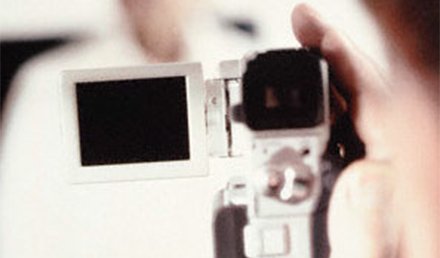Data from the 2014 Urgent Care Chart Survey of 1,778,075 blinded visits by patients to more than 800 different urgent care clinics, conducted by the Journal of Urgent Care Medicine, reveal that the top 3 procedures performed at U.S. urgent care centers in 2014 were as follows, in descending order: • Medication administration (vaccine, IV, steroid injection, anesthesia)—59.7 million procedures (39.8% of visits) • Rapid diagnostic tests and cultures—44 million procedures (29.4% of visits) • …
Read MoreProtecting Patients and Assets: Pre-employment Background Checks and Drug Screening
ALAN A. AYERS, MBA, MAcc, Experity A number of patients who had been dispensed the narcotic hydrocodone called the urgent care center to complain that their medications “weren’t potent enough,” that they “didn’t work,” or that the pills in the bottle “didn’t match the description on the label.” Although these reports were initially dismissed by the medical director as drug-seeking behavior, the volume and corroboration of complaints soon led to an internal investigation. It turned …
Read More
Investment Trends in Urgent Care: A Mergers and Acquisitions Roundtable
Urgent message: Urgent care is a highly fragmented industry considered ripe for consolidation. A handful of high-profile deals have made 2015 the biggest year for mergers and acquisitions yet, but high valuations, oversaturated markets, changing buyer and seller expectations, and structural changes attributable to the Patient Protection and Affordable Care Act will influence urgent care deal-making in coming years. ALEXANDER NATHANSON, MD Mergers and acquisitions (M&A) in the U.S. urgent care industry have historically consisted …
Read MoreElectrocardiogram Data Points and Evaluation and Management Visit Level; Gait Training
Q. When counting data points for the complexity of medical decision-making (CMDM) portion of the evaluation and management (E/M) visit level, what is the correct way to assign data points for an electrocardiogram? For example, the Current Procedural Terminology (CPT) code is 71020 for a chest radiograph with interpretation and report. The description itself has the interpretation and analysis included in the code already. Is it considered double-dipping if we count the interpretation as 1 …
Read More
Implications of Patients Recording Urgent Care Provider Encounters
Urgent message: The ubiquity of smartphones increases the risk that patients will openly or covertly record interactions with their physicians. Urgent care operators should understand the legal and privacy implications and protect themselves with appropriate policies and training. ALAN A. AYERS, MBA, MAcc Practice Velocity Smartphones with cameras and audio and video recorders that can be easily concealed in a pocket, purse, or backpack are now used by roughly 71% of Americans, including 86% of …
Read MoreFractures in ICD-10-CM
Q. We treat a lot of fractures in our urgent care clinic, and I understand there are changes for coding these in ICD-10-CM [International Classification of Diseases, 10th Revision, Clinical Modification]. What will we need to be aware of? A.Most of the changes made in ICD-10-CM were to chapter 19, “Injury, Poisoning, and Certain Other Consequences of External Causes (S00-T88),” because of the need to identify laterality and 7th-character extensions that indicate the type of …
Read MoreTop Classes of Prescriptions Written at U.S. Urgent Care Centers in 2014
Data from the 2014 Urgent Care Chart Survey of 1,778,075 blinded patient visits to more than 800 different urgent care clinics, conducted by the Journal of Urgent Care Medicine, show that for almost half of visits (48.6%) to U.S. urgent care centers, the prescriptions written by health-care providers are for oral antibiotics. The next 4 classes of prescriptions written are as follows, in descending order by percentage of visits: corticosteroids (13.7%), narcotic analgesics (9.9%), cough …
Read MoreTwo-Thirds
JOHN SHUFELDT, MD, JD, MBA, FACEP Editor’s note: For almost 10 years, Dr. John Shufeldt has generously shared his talents as a writer, legal expert, and thought leader with JUCM readers as the contributing editor of our Health Law department. Although John is retiring as its regular contributor, he will always remain its award-winning founder. In future issues, the Health Law column will be expanded to include new contributors and cover a broader scope of …
Read MoreIntravenous Therapy
Q. We perform a lot of intravenous (IV) infusions in our urgent care facility. Sometimes we also perform IV pushes and hydration at the same time as the infusion. What is the correct way to code multiple IV infusions? Do we have to document start and stop times for each IV service? A. If an IV infusion and IV push are performed concurrently in the same IV site, you should only bill one “initial” code. …
Read MoreTop Types of Diagnosis Codes at U.S. Urgent Care Centers in 2014
Data from the 2014 Urgent Care Chart Survey of 1,778,075 blinded patient visits to more than 800 different urgent care clinics, conducted by the Journal of Urgent Care Medicine, show that the top types of diagnosis codes for visits included respiratory (52.9%), wound/trauma/fracture (34.9%), ear (9.2%), dermatologic (7.5%), and genitourinary (7.0%). The survey’s methodology and data abstraction forms were initially designed in 2008 by researcher Robin M. Weinick, PhD, then an assistant professor at Harvard …
Read More